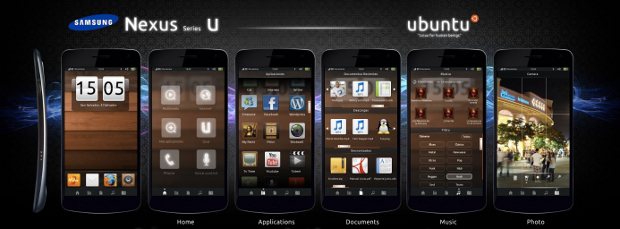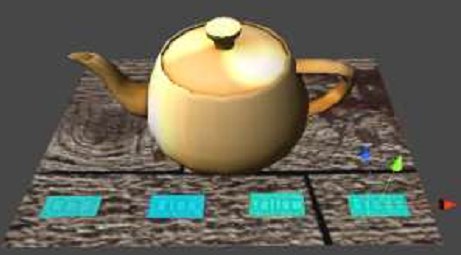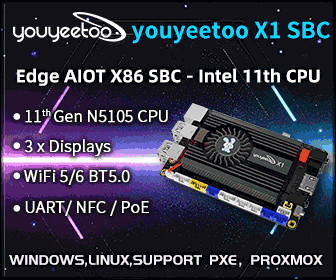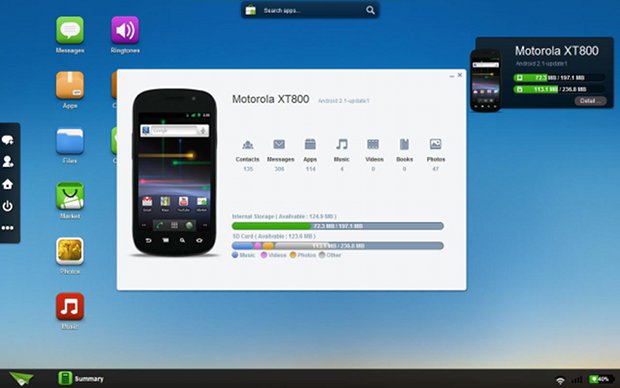Ubuntu developers announced they wanted to port their OS beyond desktop by 2014, and would like to use it on smartphones, tablets and televisions. Following the announcement, the community has made a few mockup. Here are a few samples: Unity Mobil Mockup by JMMING: I quite like this design (Samsung Nexus Series U) similar to Android with the Ubuntu theme. My Ubuntu Phone by Musl1m: muls1m mockup is also based an icon grid, but keeps the Ubuntu icon bar on the left. Ubuntu with mobile Unity by ginjaninja405 This mockup is similar to the one above, but the icon bar can be located either to the left or to the right, and the bottom image shows phone related notifications such as missed phone calls, SMS and Facebook messages and notifications. There are also other interesting Ubuntu smartphones mockup, including a full phone design (casing + UI) based on Ubuntu theme. If […]
Metaio Releases Mobile Augmented Reality SDK
Yesterday Qualcomm released QCAR SDK 1.5 Beta, and today Metaio announces its Mobile SDK 3.0 for augmented reality application development on Android and iOS. The metaio Mobile SDK brings with it patented gravity-awareness and visual tracking technology for 2D and 3D objects, now three times more robust than the previous version. These features combined will ensure AR experiences that are more natural, more intuitive, and more realistic, says the company. Metaio recently announced formal collaborations with ARM, ST-Ericsson and Texas Instruments to fully take advantage of the GPU hardware provided by those companies and the Mobile SDK is optimized for ARM Mali GPU (both graphics and compute), ST Ericsson Nova and NovaThor mobile processors and TI OMAP processors. The metaio Mobile SDK also includes its own 3D rendering engine – now with advanced shader support – and a plugin to make use of Unity3D (3D game engine). You can watch […]
Archos Is Working on a 300 Euros Asimo-like Robot
Archos is known for its Android Tablets and MP3 player. But Henri Crohas, Archos’s CEO, would like to release a human robot with the height of a child for 300 Euros, a bit like a small version of Asimo, the Honda human robot. In an article about Henri Crohas, published by Liberation (French Newspaper), it is mentioned “No, Crohas rejoices when we mention the evolution of Archos advances: thinner and thinner tablets and on the domotics (Home Automation) side, a robot of the height of a child sold for less than 300 Euros”. Archos has since then confirmed to PC World France, they worked on this type of products, but would not provide further details at this point. But such robot could be used as a toy or it could be programmed to do some simple tasks. Rumours are that they work with another French company, Alrebaran Robotics, which designed […]
How to Access the Old Youtube Layout (December 2011)
YouTube has recently launched a new version of the website with a new layout. There are several things I do not like, but the main annoyance is that apparently I can not remove the videos I have already watched from the feed. If you are like me and prefer the old layout, you can do so by accessing: http://www.youtube.com/index_ajax. It seems to work fine showing your subscriptions and friends activities, but it just displays “Authorization Error. ” at the top. I have not found any problem for now, but it’s possible that a few things do not work.
Demo of Archos 101 G9 Turbo 1.5Ghz Powered by OMAP4460
After Android ICS Preview on Archos G9, Charbax has uploaded another video showing the new Archos 101 G9 Turbo with TI OMAP4460 clocked at 1.5GHz running Android 3.2 (Honeycomb) and comparing it to the Archos 101 G9 Classic (OMAP4430 @ 1.2 GHz). The quadrant score is about 38% percent faster for the Turbo version (2176) compared to the Classic version (1576). He then does some side by side web browser benchmark comparison between the Archos 101 G9 Classic and Turbo and the Turbo version appears to be much faster. However, the web browser tests were done with sites hosted on the internet (amazon and cnn sites), so there are a quite of lot of factors than can affect the loading times and these types of benchmark are better performed in the local network. Archos plans to release the Turbo version (at 1.5Ghz) in January 2012 for a recommend retail price […]
Qualcomm Releases Augmented Reality SDK 1.5 Beta for Android
Qualcomm has just announced the availability of QCAR SDK version 1.5 Beta 1 for Android. is now available for download. The Key features and improvements in this version of the QCAR SDK include: Video background texture access: The SDK now provides a simple and streamlined way of accessing the video background texture. Developers can now write custom special effects using powerful shaders resulting in far more exciting application experiences. Swapping datasets at runtime: If your app needs to augment more than 60 images, you can now create multiple datasets – using the web-based Target Management System (My Trackables tool)- and load the appropriate dataset at runtime. You no longer have to upgrade your app to change the target dataset, and you can now build AR experiences that work on a large number of images. Improved tracking performance: The new SDK features several enhancements that reduce jitter in the augmentations, speed […]
Use Your Desktop Computer to Control Your Android Device
AirDroid is a free application that allow you to control your Android smartphone (or tablet) with your computer via WiFi. You simply need to install the app on your smartphone and to connect to the interface with your desktop web browser. You’ll then be able to manage your files, pictures, contacts.. or send SMS with your computer keyboard. You can watch the video below for an overview of AirDroid features: You can download this application at http://market.android.com/details?id=com.sand.airdroid
Nokia Developer Day 2: Qt QML Workshop – Chiang Mai
I’ve just attended Nokia Developer Day on 6-7 December 2011 in Chiang Mai. I’ve already written a summary about the first day dealing with Series 40 Java and Web Apps Workshop. The second day was focused on Qt/QML (Qt Meta-Language) software development for Nokia’s Symbian phones. Nokia will phase out Symbian operating system in 2016, but they’ll still support it until that time. Nokia will also port Qt to lower end phones (e.g. Series 40) on a new operating system based on Linux called Meltemi. Overall Business Direction & Strategy The first 45-minutes for was presentation given by Grant Aaron McBeath, Managing Director, Nokia Thailand and Emerging Asia, about Nokia business direction: focus on Windows Phone for smartphones, Java/Web Apps for feature phones and future disruption. He also showed the progress of Nokia Ovi Store with 10 million downloads a day and 177 publishers with more than 1 million downloads. […]












